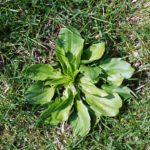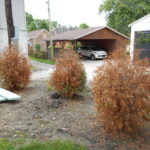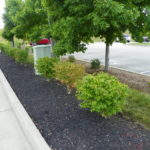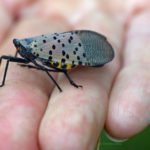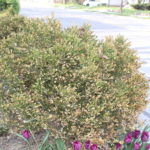Biology: Broadleaf plantain (Plantago major) is a perennial, broadleaf weed that can be found in nutrient-poor soils; however, they prefer nutrient rich-soils that are moist and often high in calcium. Broadleaf plantain is a common weed in turfgrass, nurseries, and landscapes. It germinates from seed in late spring through mid-to-late summer and occasionally in the[Read More…]
Resources for landscapes and gardens in the Midwest
Found 9 Articles
Arborvitae varieties (Thuja spp.) provide some of our most beautiful and versatile evergreens for landscapes, with an extensive selection of sizes and types. Unless they get proper care, they also give us some frustrating failures. Here is my list of the most frequently encountered ‘Arborvitae Aggravations’, based on the samples and questions we get in[Read More…]
Some landscape plants produce vigorous, upright stems that become troublesome as they out compete better-formed branches and shade out the rest of the plant. These remarkably fast growing, upright stems are called “suckers” if they come from the root system, and “watersprouts” if they originate from other stems. Ornamental crabapples are among the most notorious[Read More…]
On May 2nd an apartment fire in Greenwood occurred that reportedly originated in the mulched landscape beds. Unfortunately 56 renters were displaced that day, but fortunately no injuries were reported. Several Indianapolis news organizations reported on the origins of the fire that included a couple of quotes that were not entirely accurate. One of[Read More…]
Xanthomonas is both an unfortunate, but regular occurrence in the greenhouse industry. Despite the efforts from numerous companies to supply ‘clean plants’, Xanthomonas (and other bacterial pathogens) regularly slip through. This year, it came in on begonia. The pathogen. Xanthomonas is a genus of yellow colored bacteria that infect many species of plants (approximately 400!),[Read More…]
The recent jump from Winter to Summer (with 2-3 days of Spring somewhere in there) got folks out looking at Tulips in full bloom now in northern Indiana. The only thing marring the view in one local planting was an outbreak of tulip fire, caused by the fungus Botrytis tulipae. The disease first shows up[Read More…]
It is the policy of the Purdue University that all persons have equal opportunity and access to its educational programs, services, activities, and facilities without regard to race, religion, color, sex, age, national origin or ancestry, marital status, parental status, sexual orientation, disability or status as a veteran. Purdue is an Affirmative Action Institution. This material may be available in alternative formats. 1-888-EXT-INFO Disclaimer: Reference to products in this publication is not intended to be an endorsement to the exclusion of others which may have similar uses. Any person using products listed in this publication assumes full responsibility for their use in accordance with current directions of the manufacturer.
Sign-up to receive email news and alerts from Purdue Landscape Working Group:
